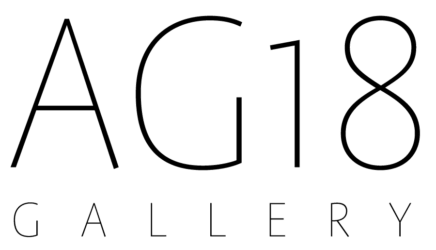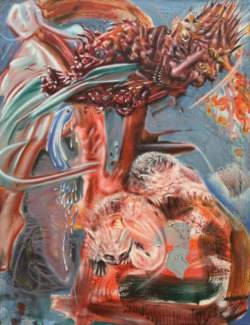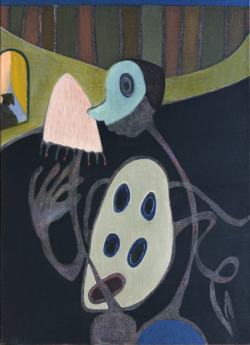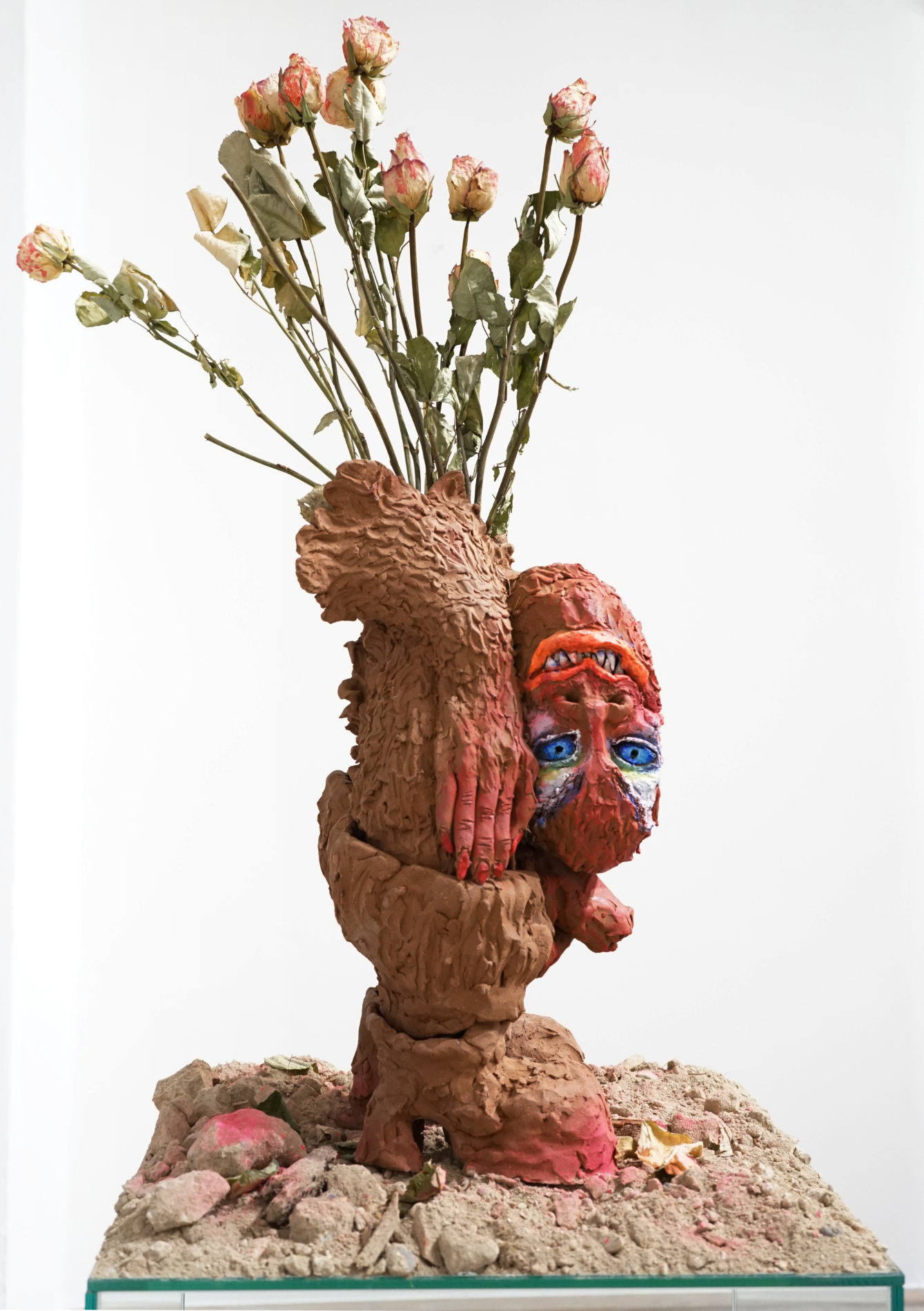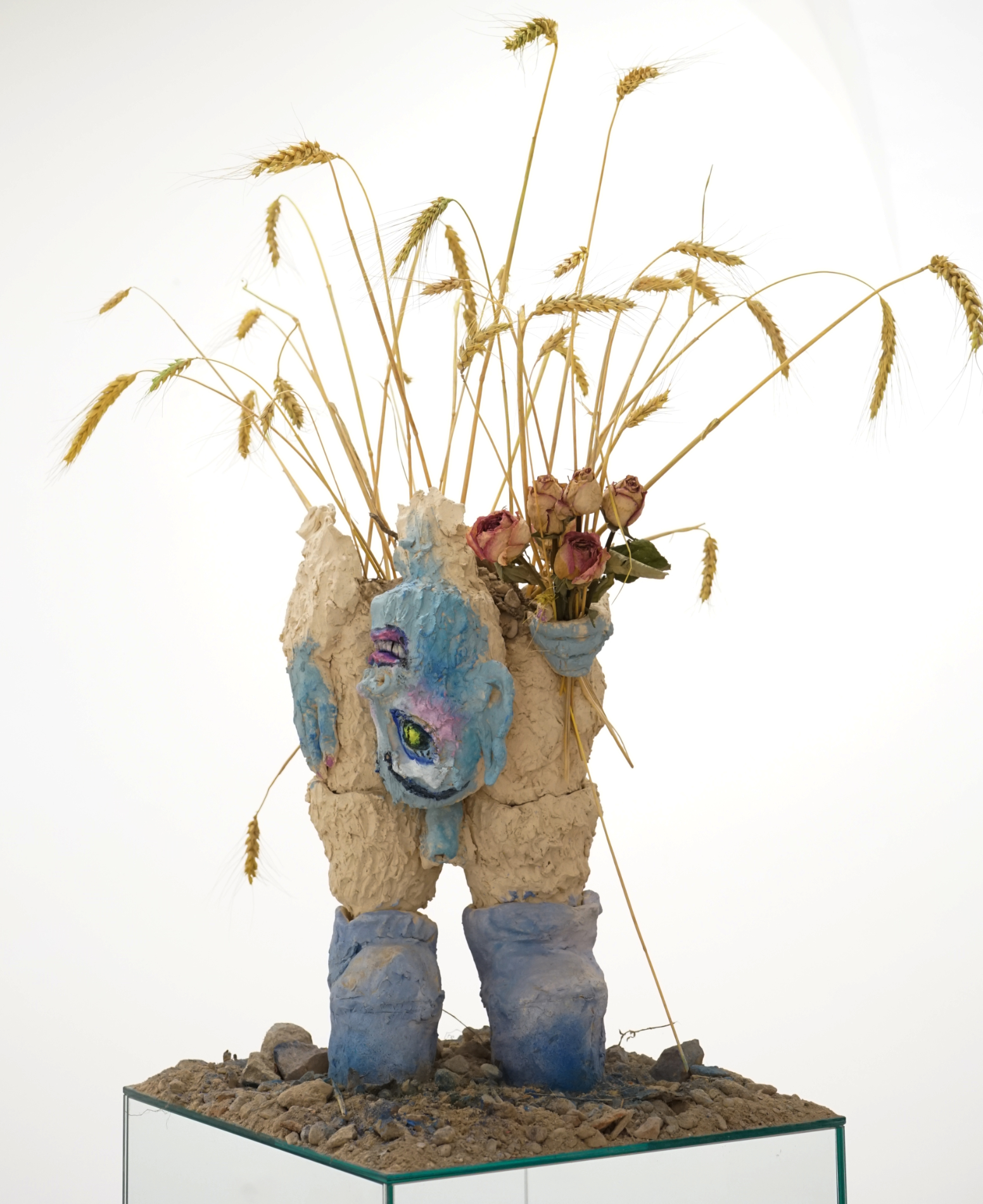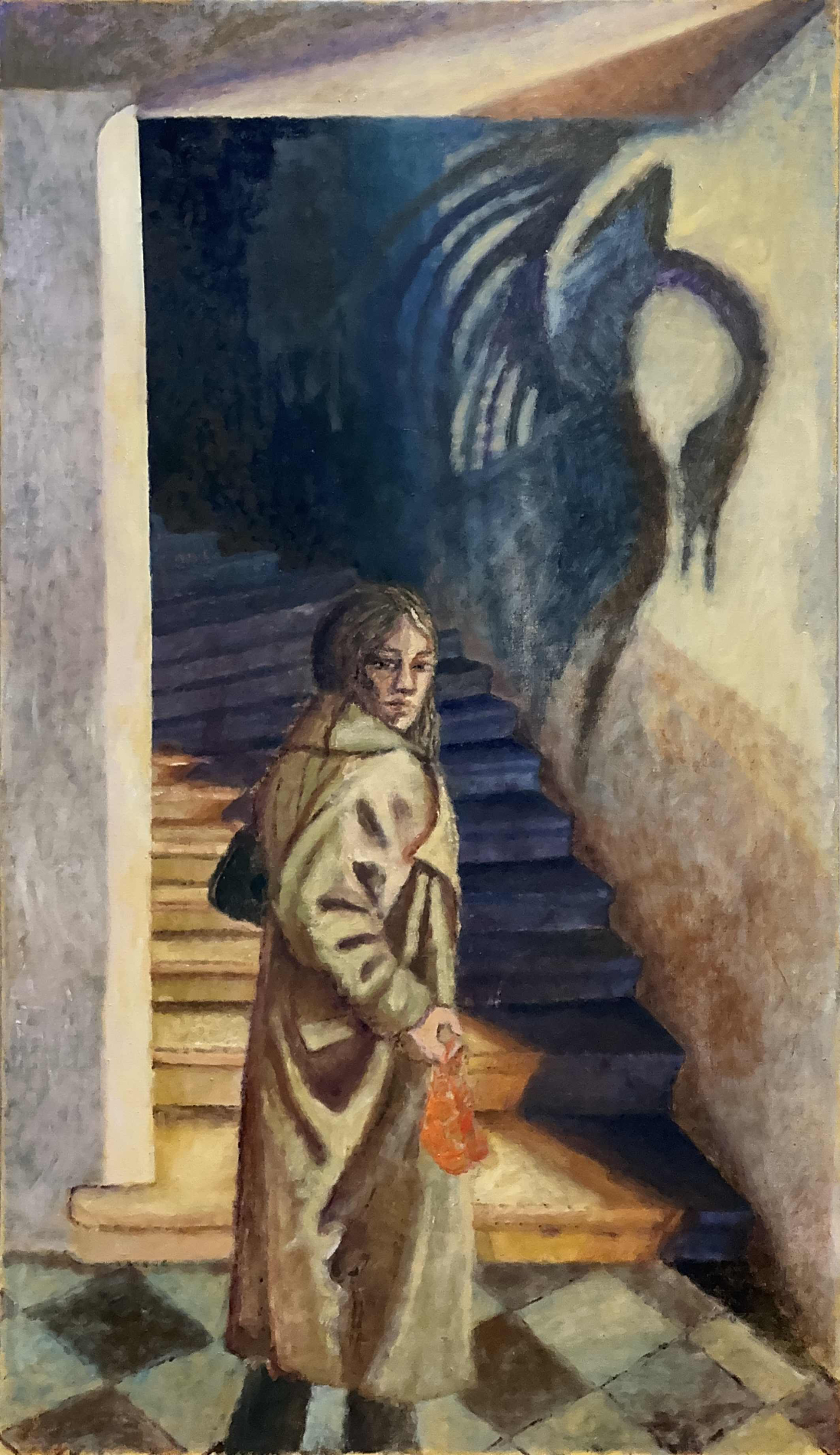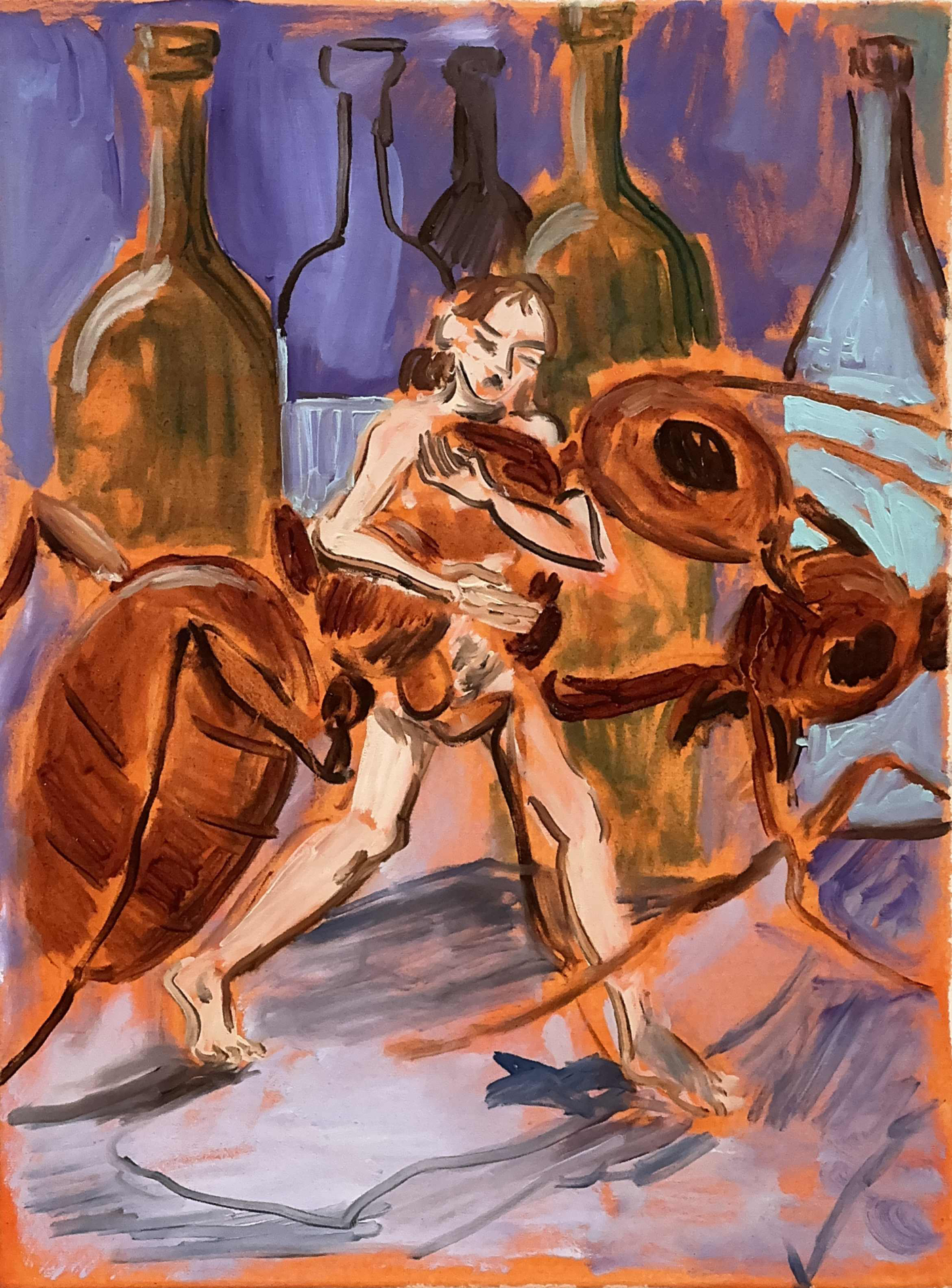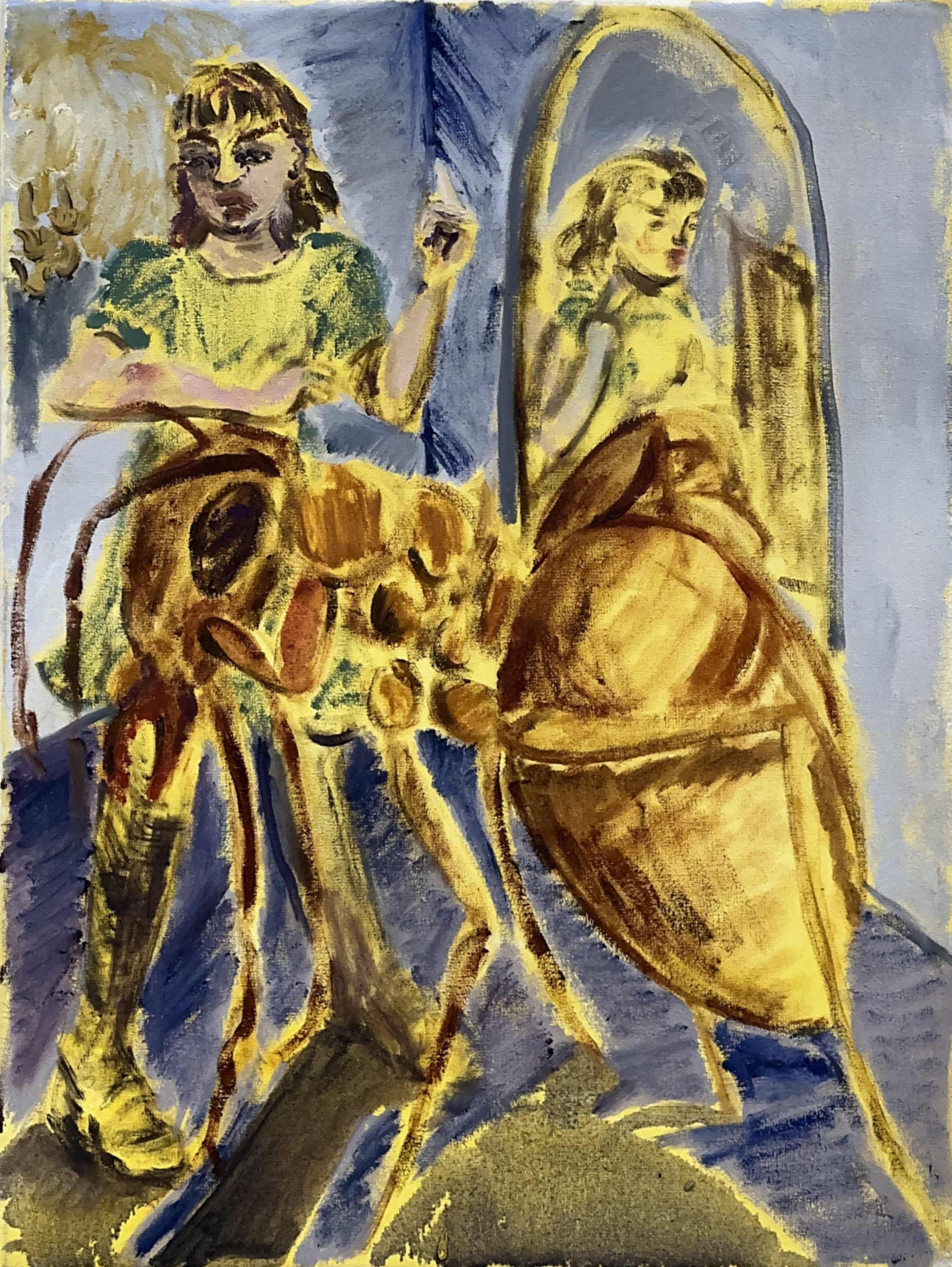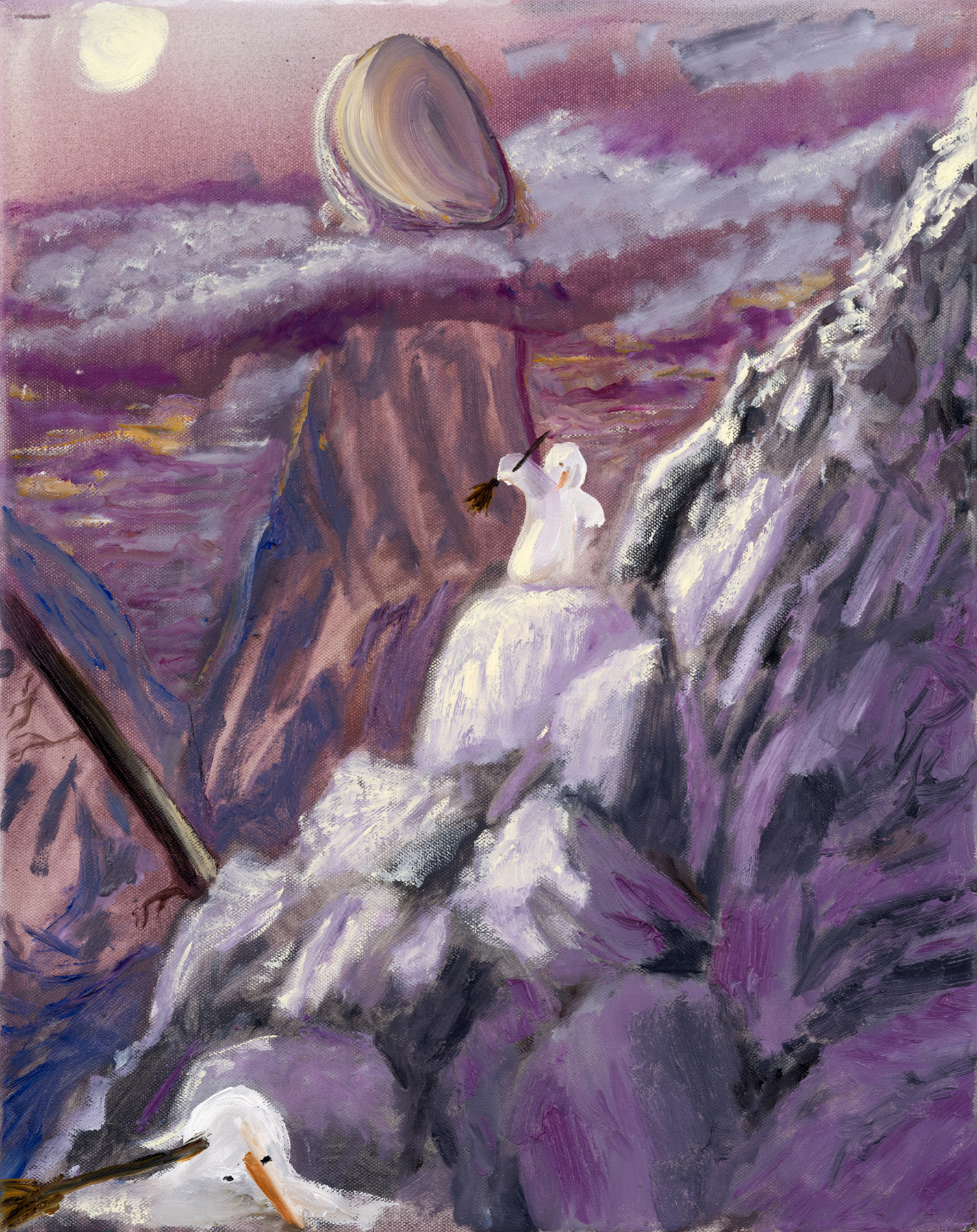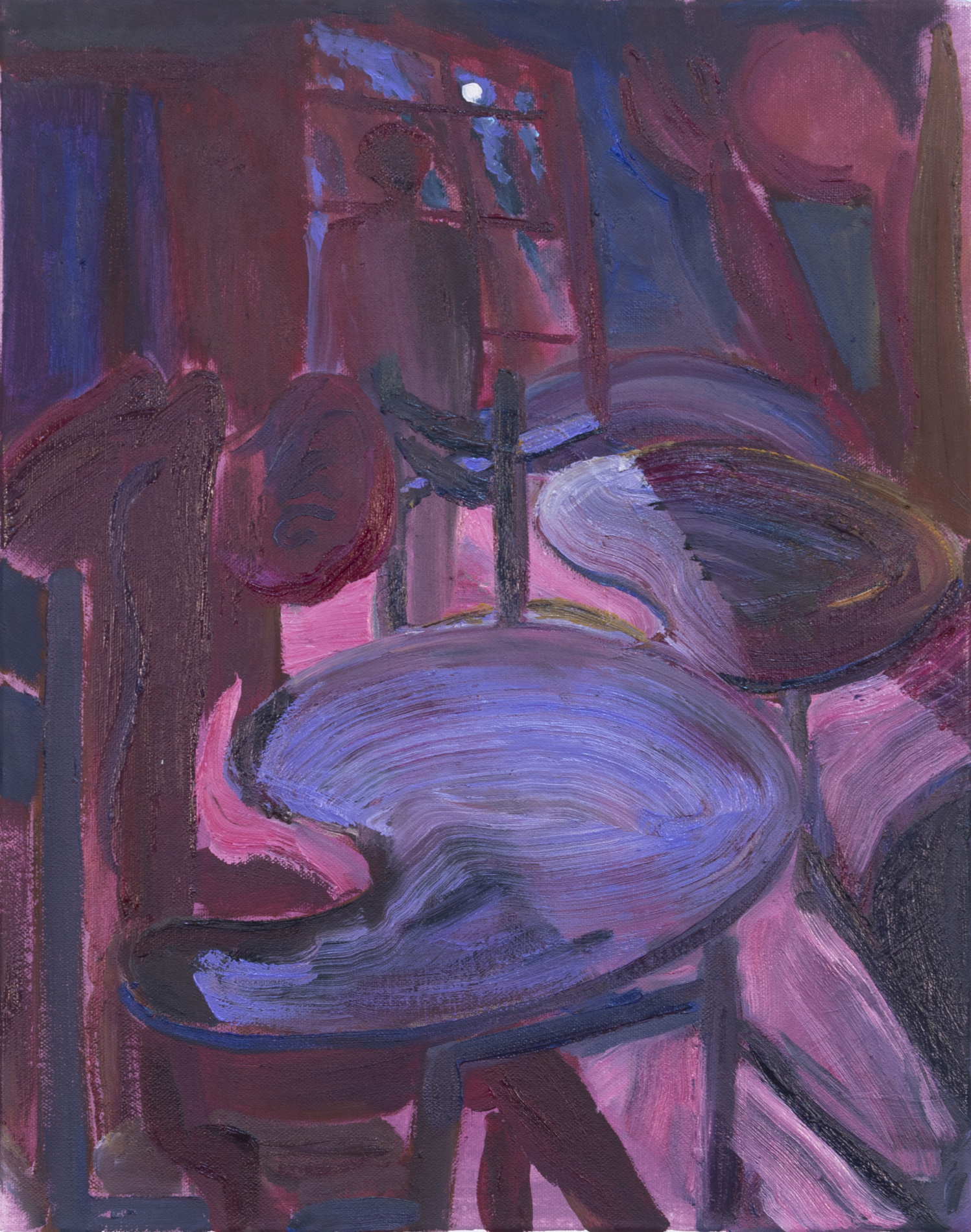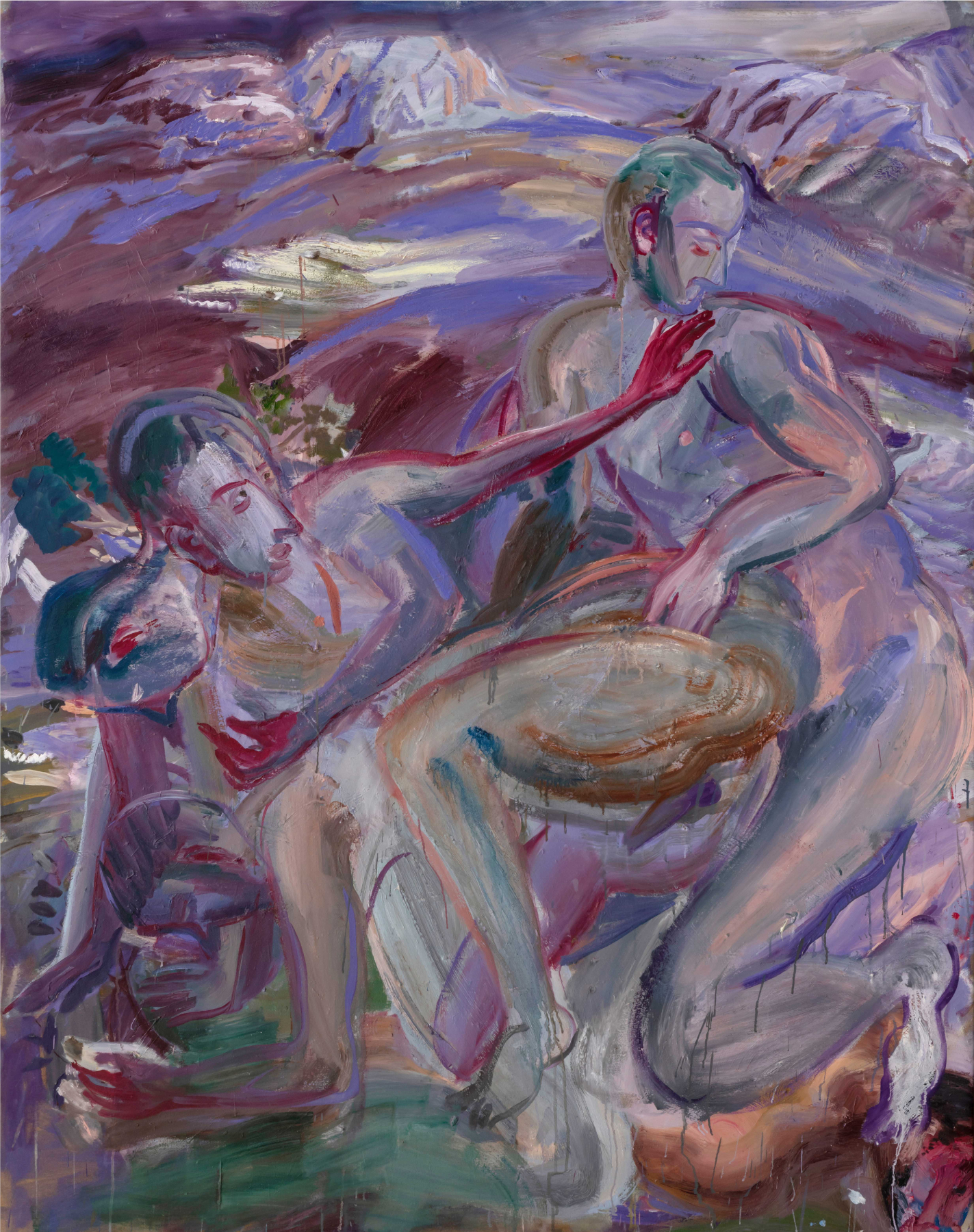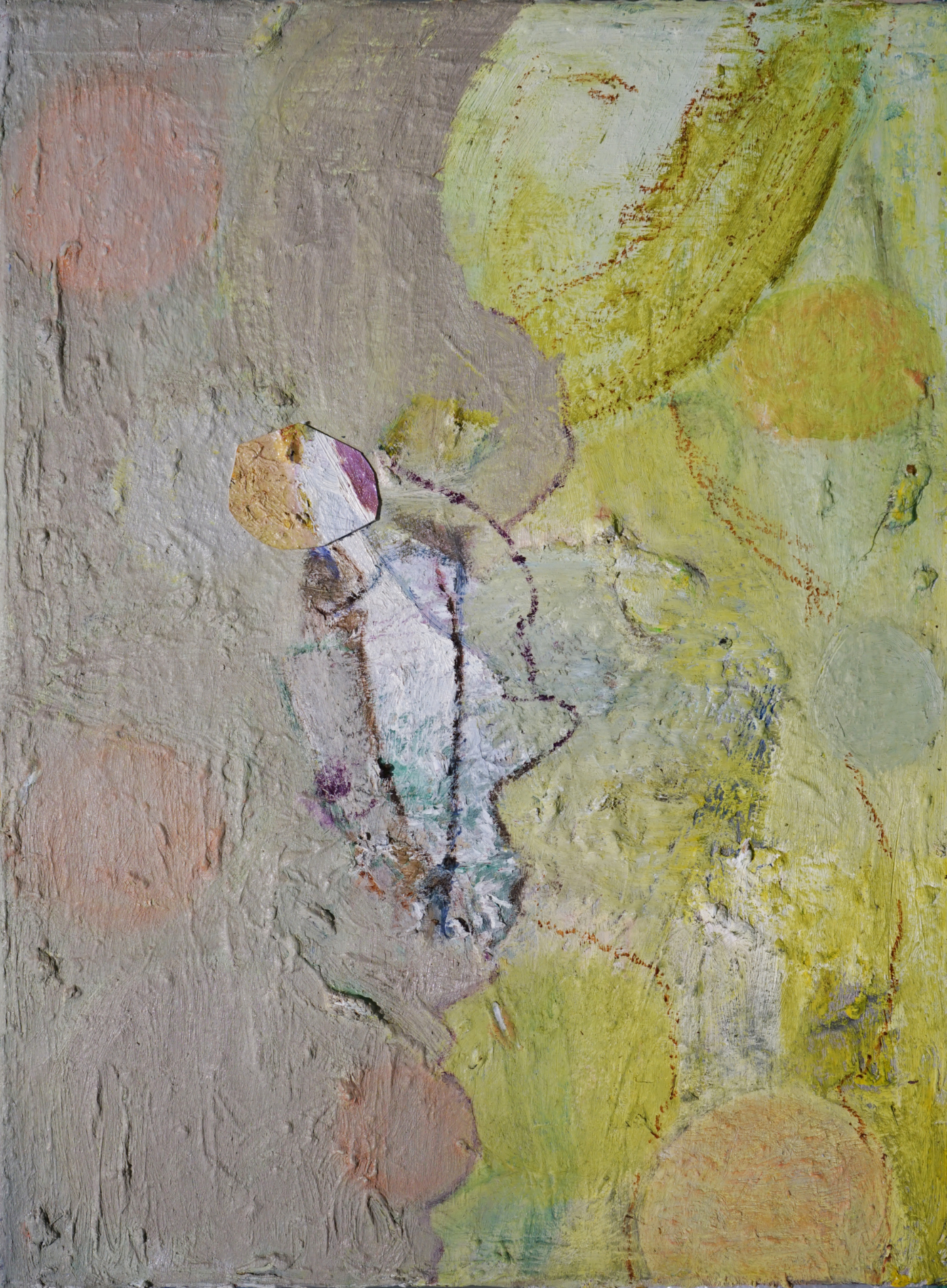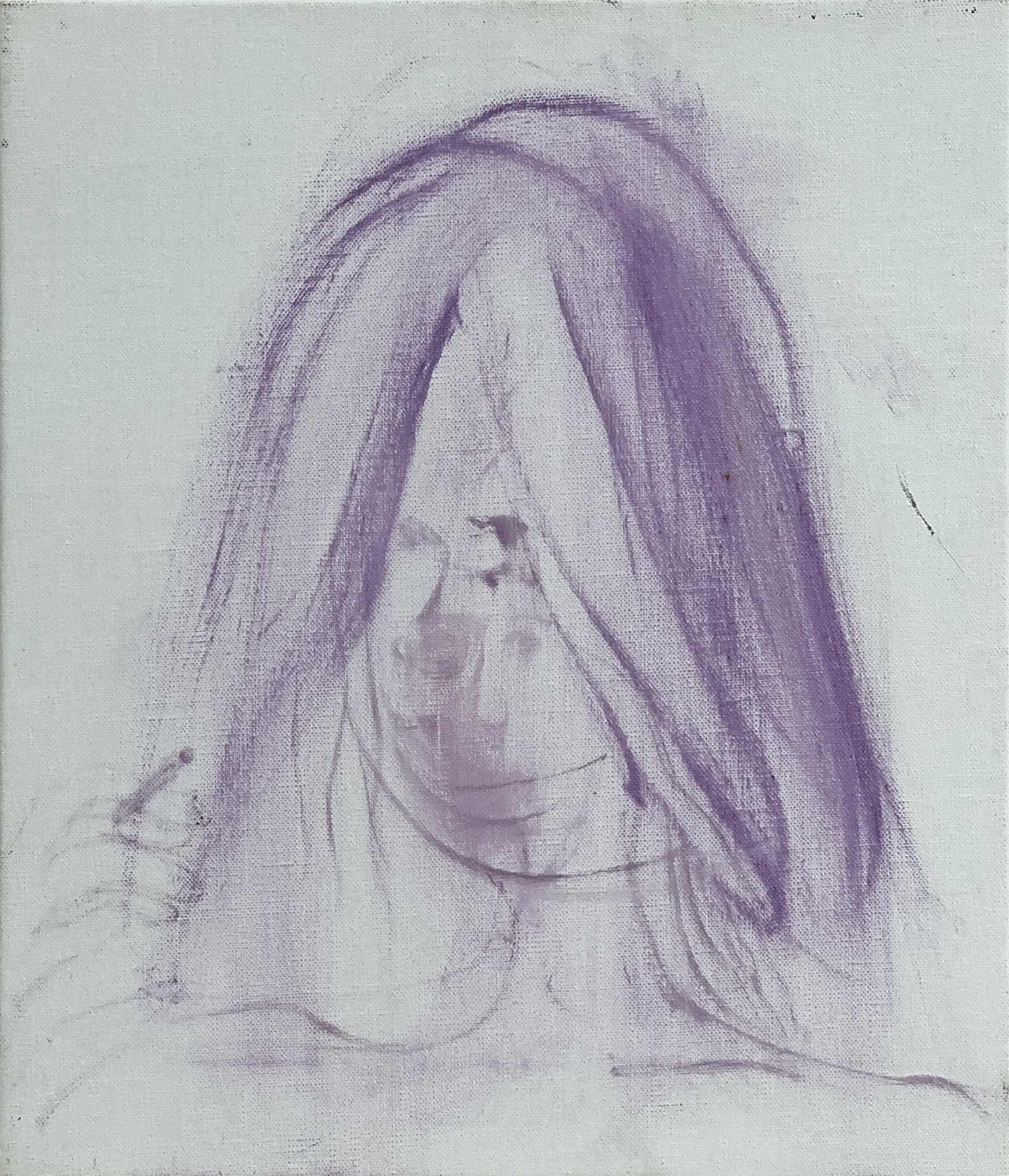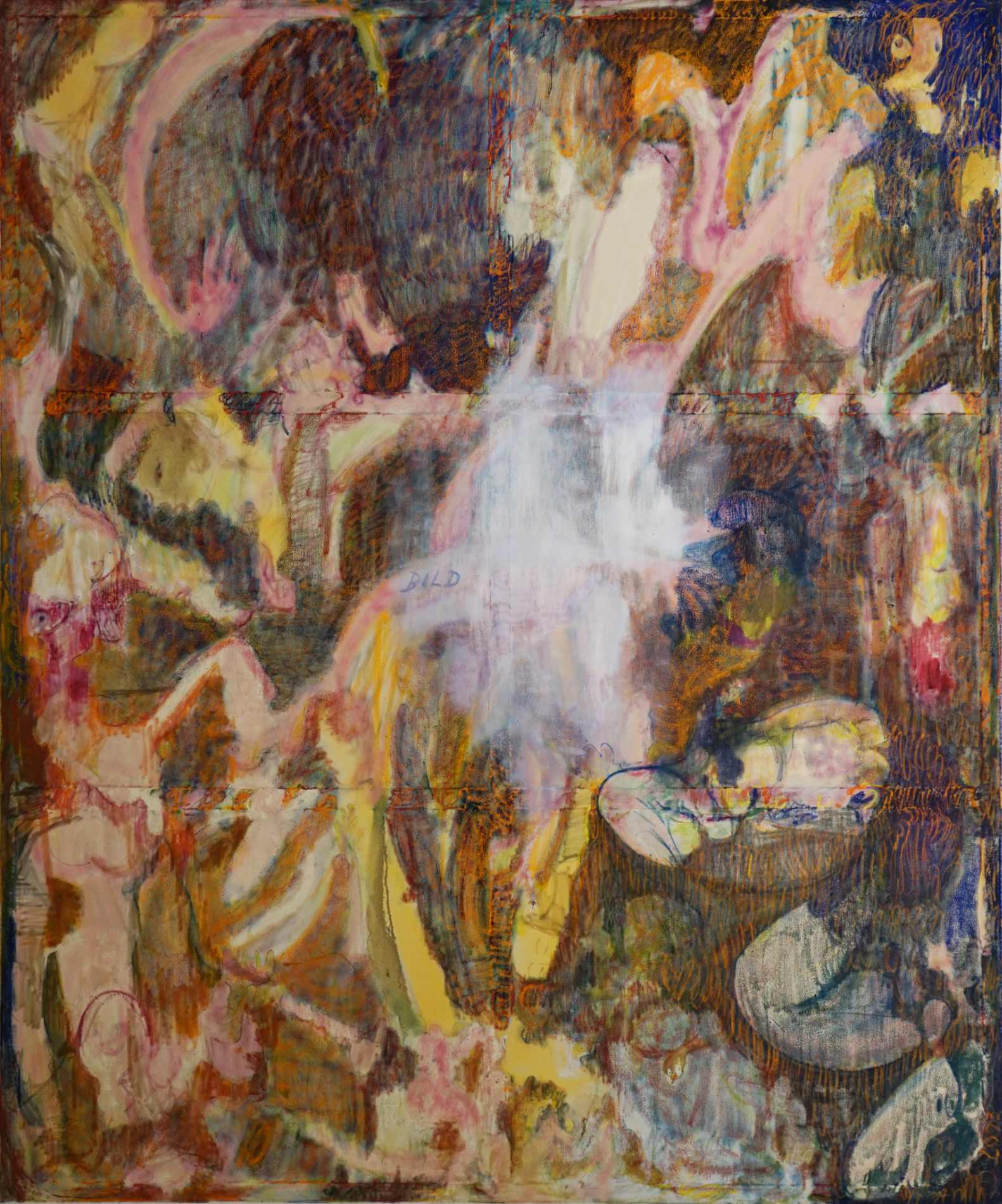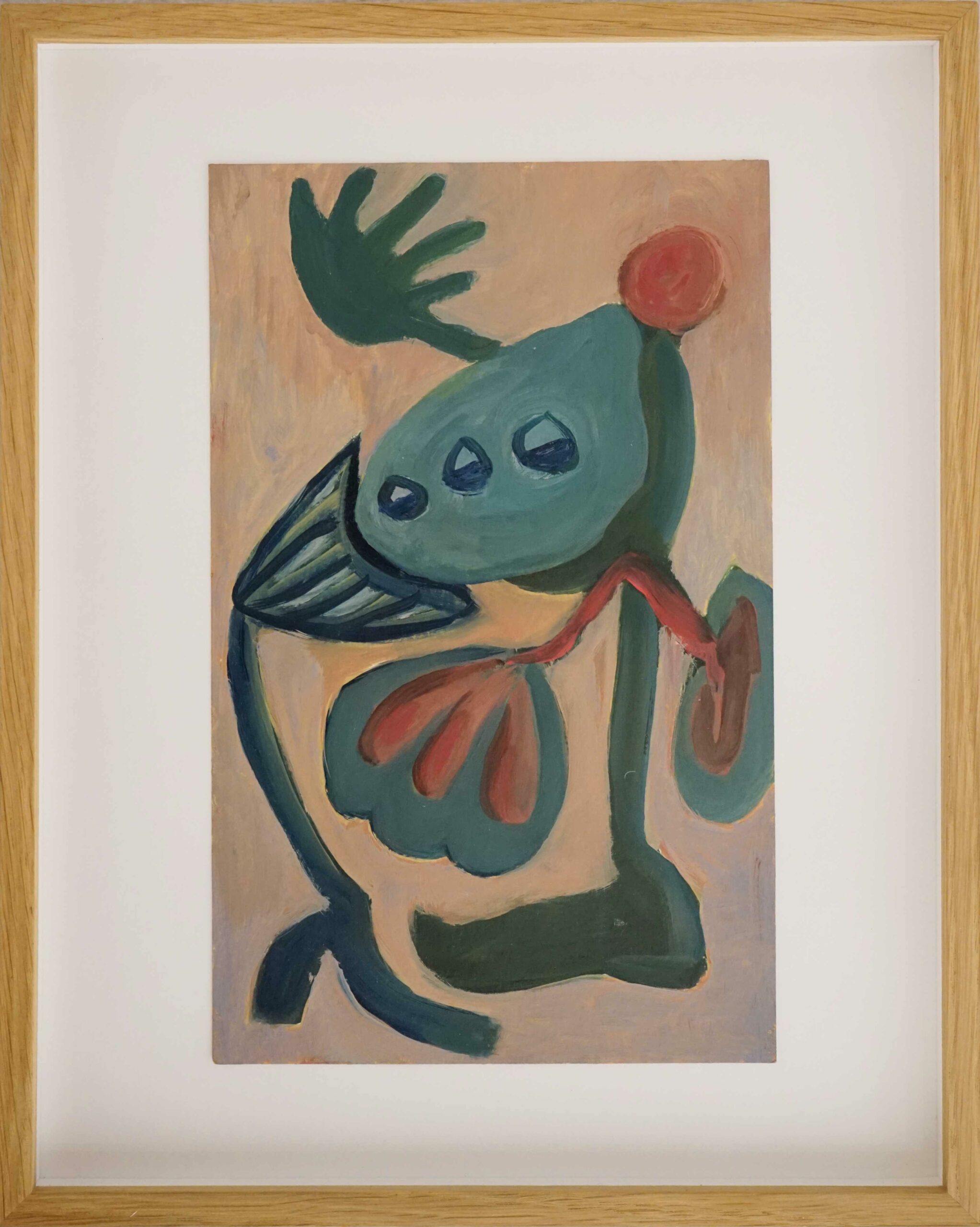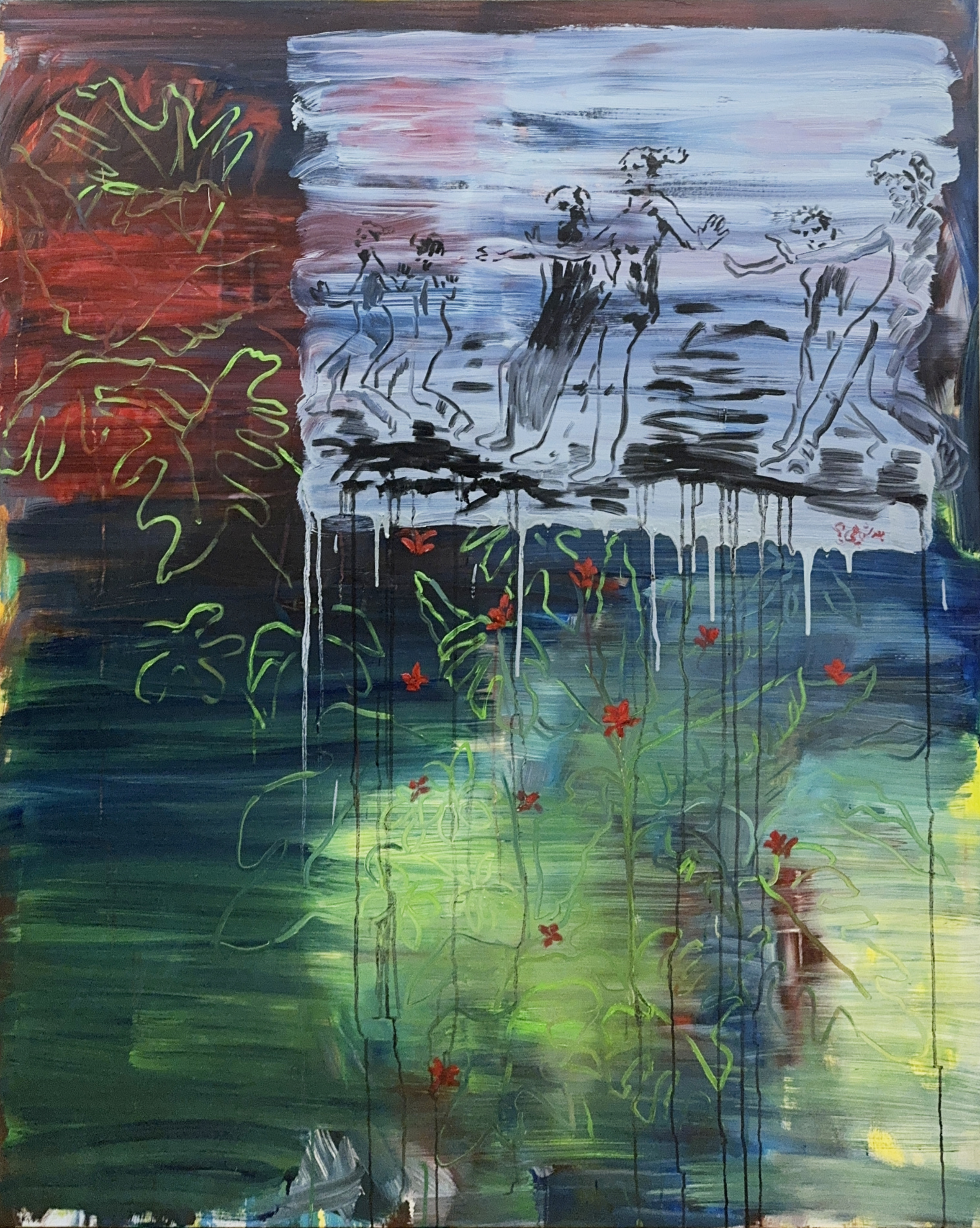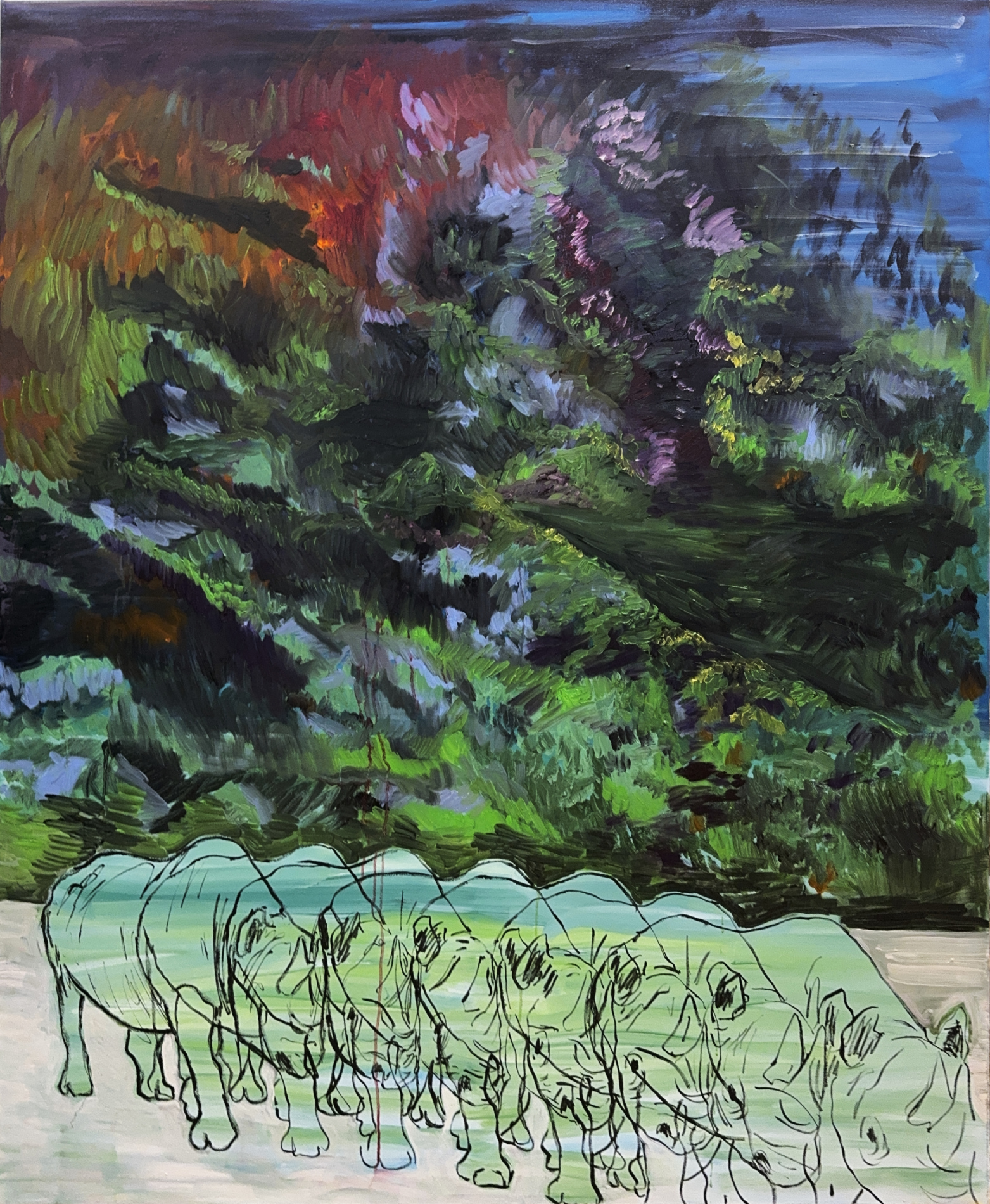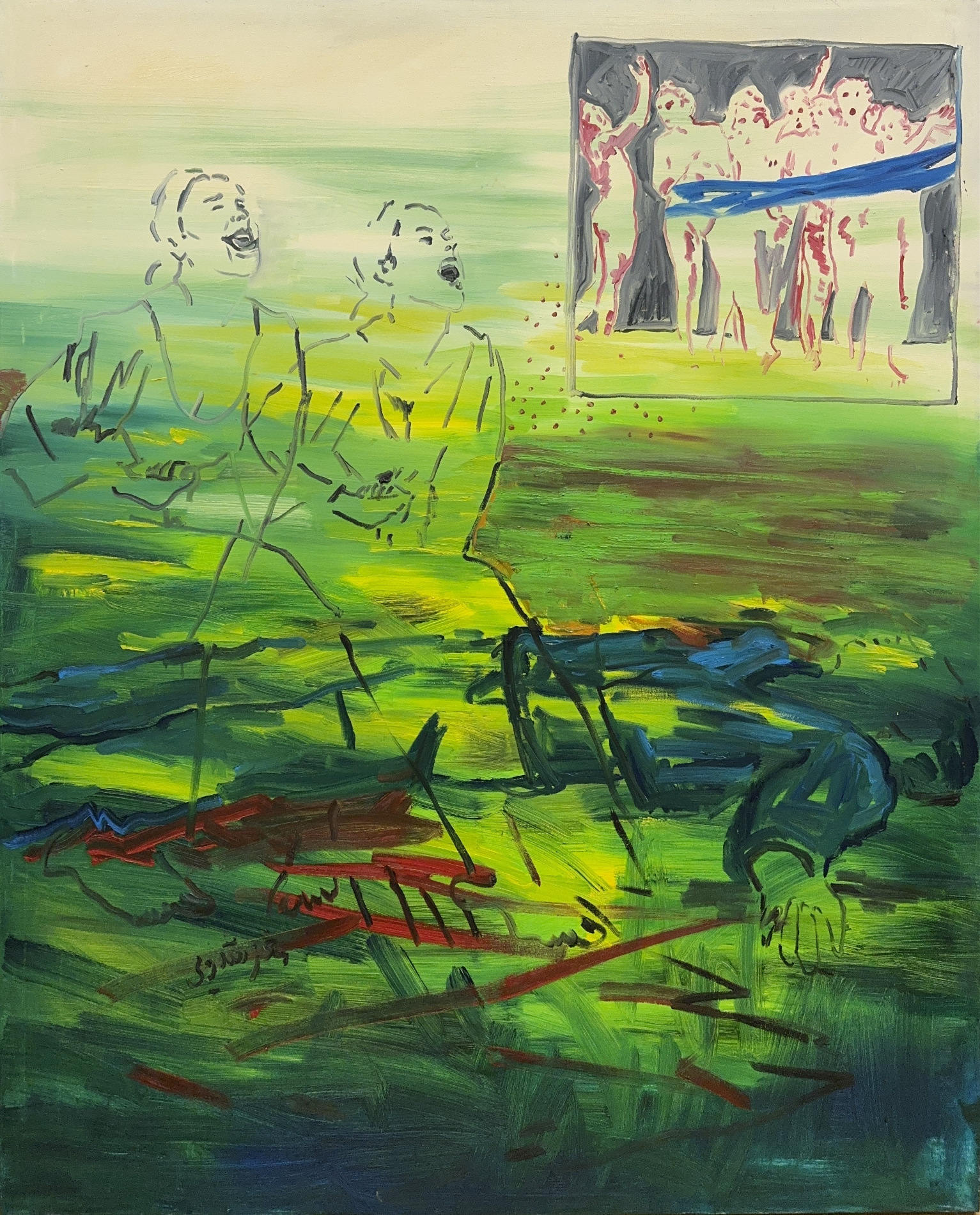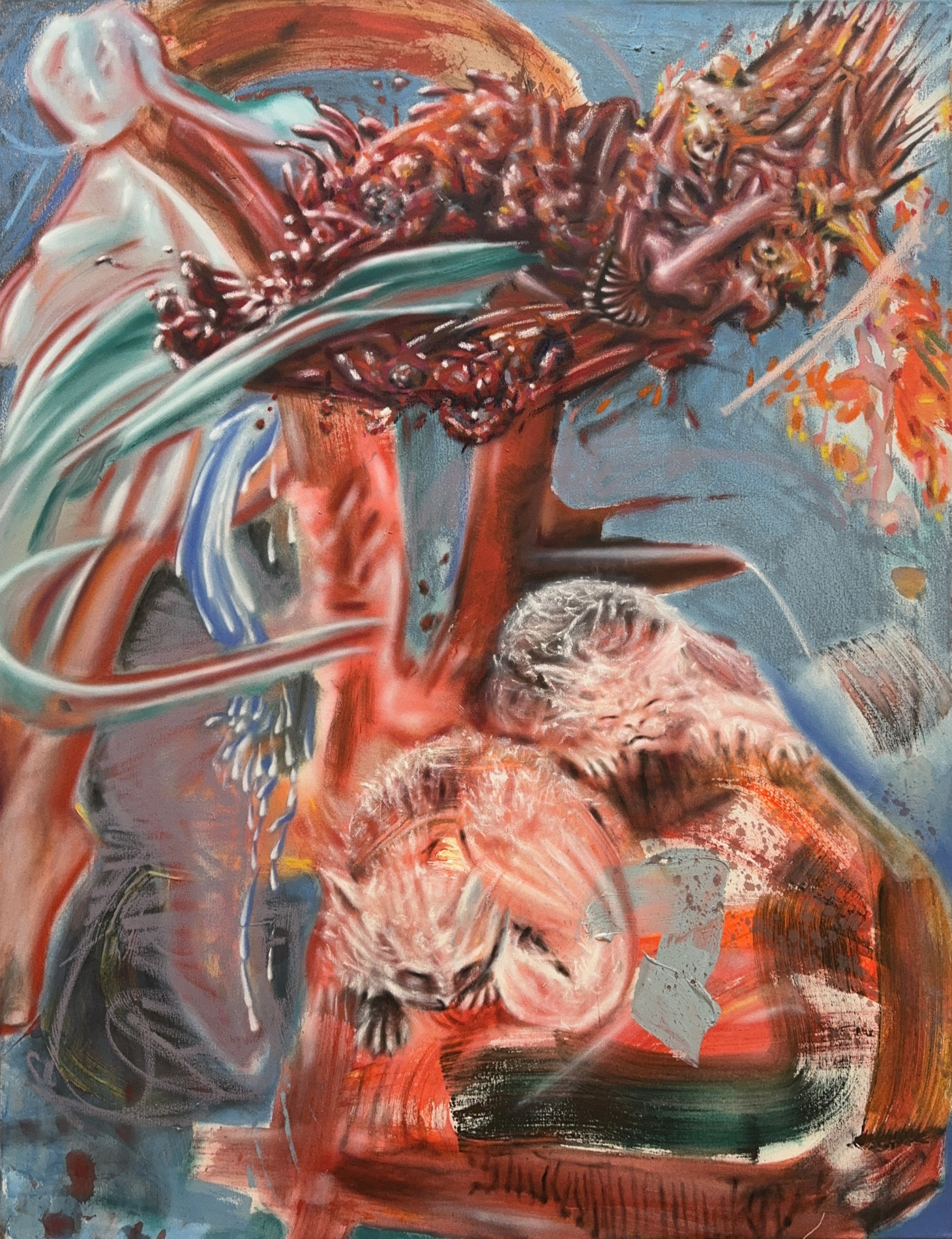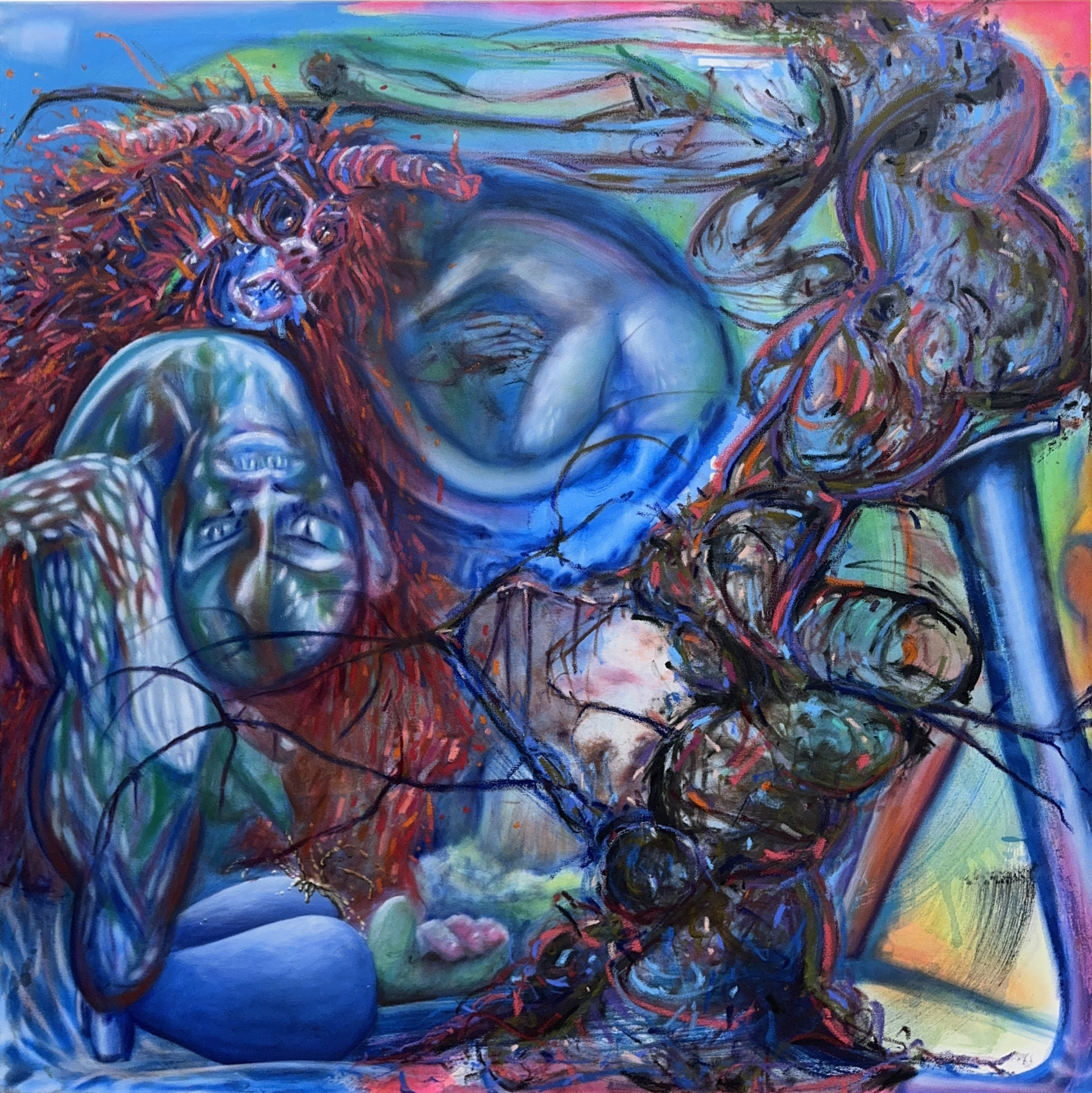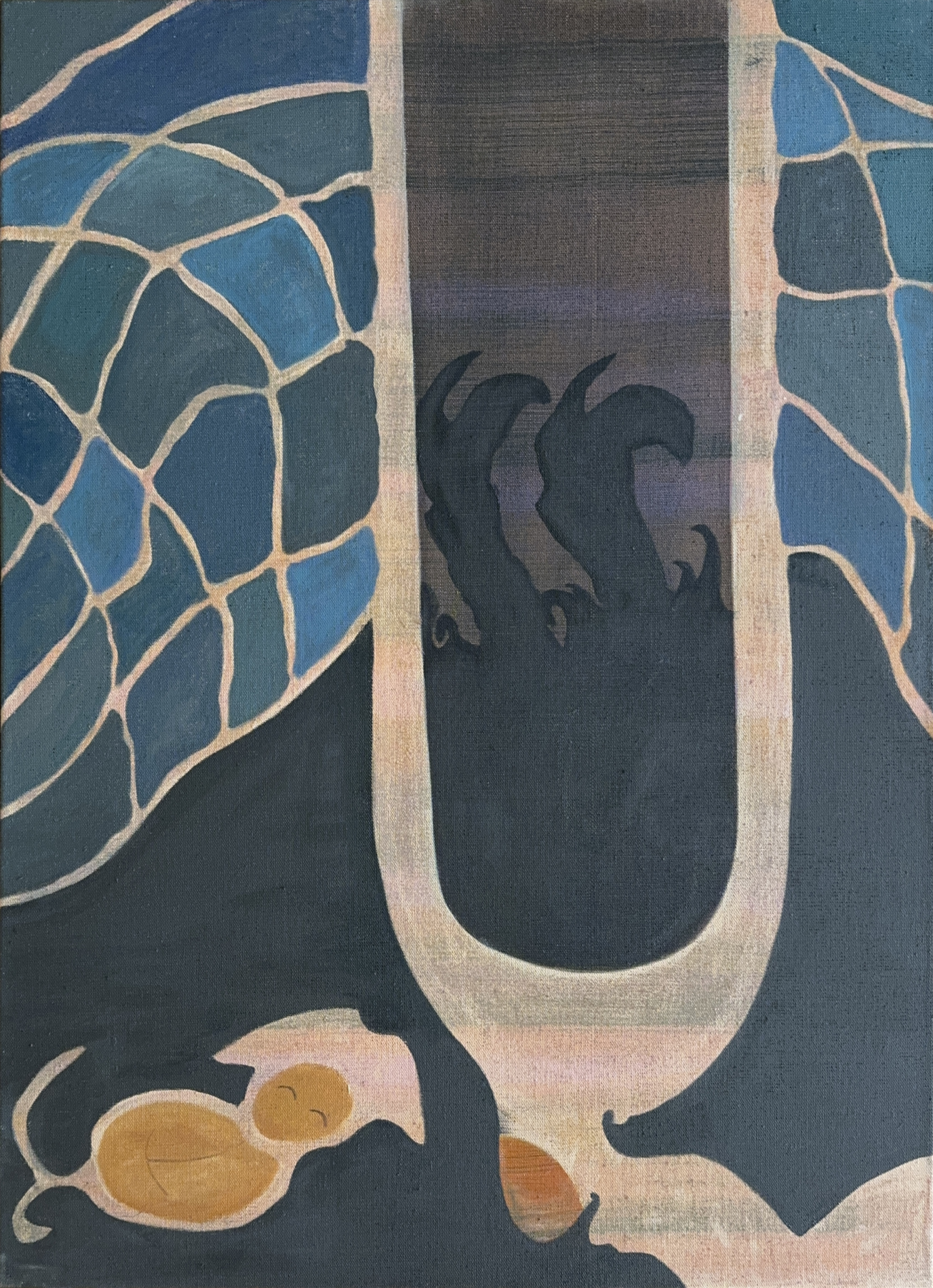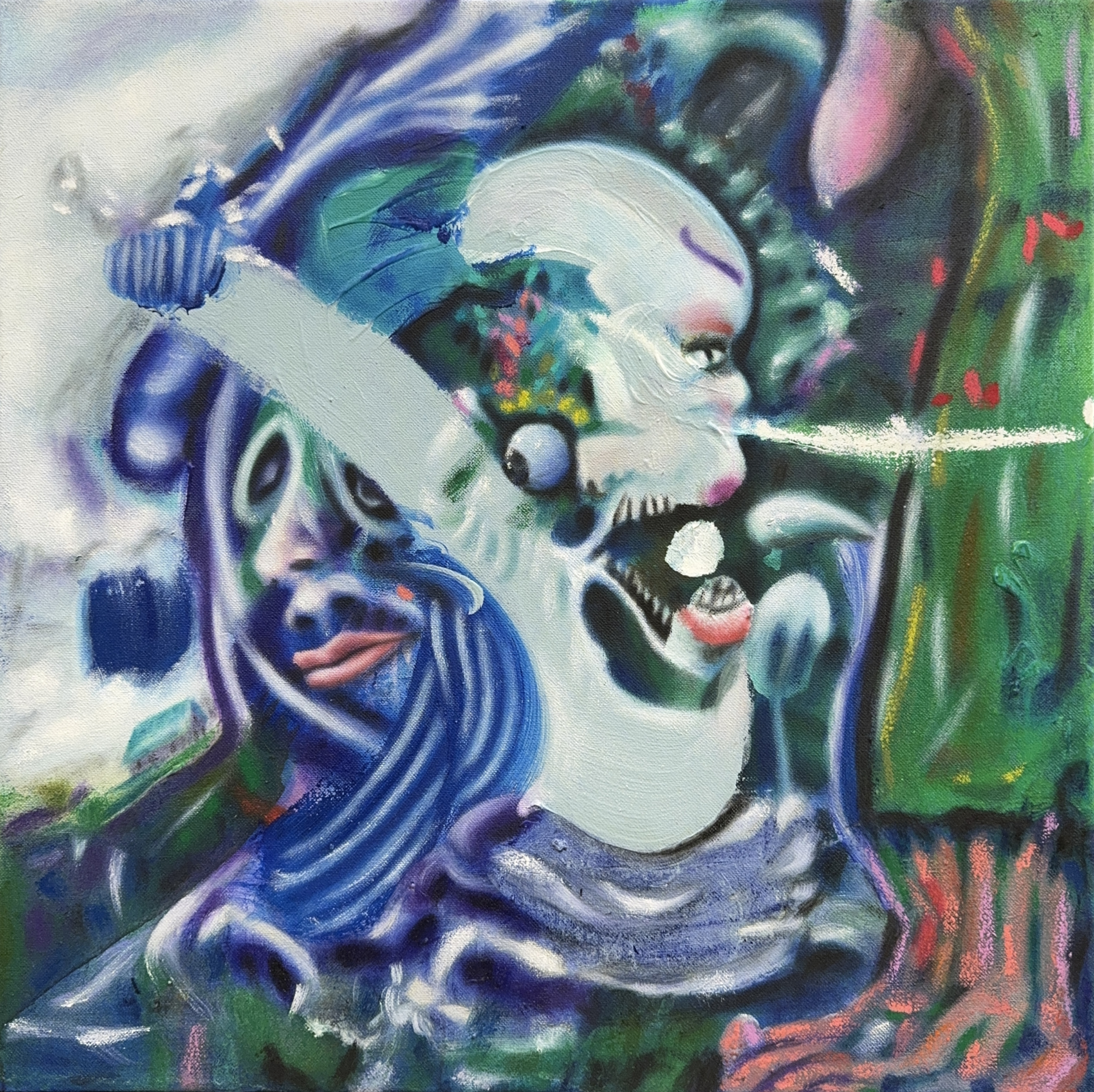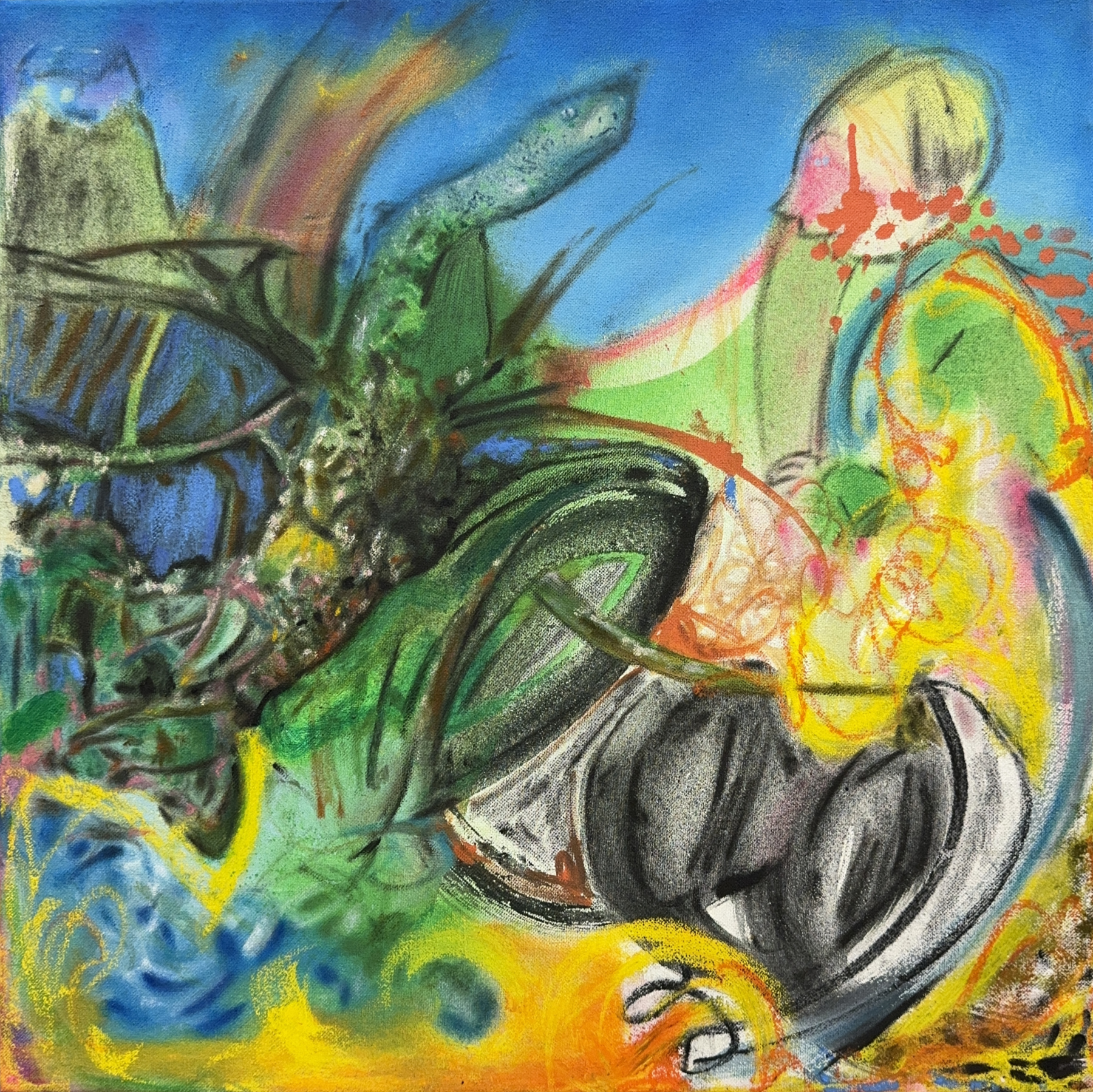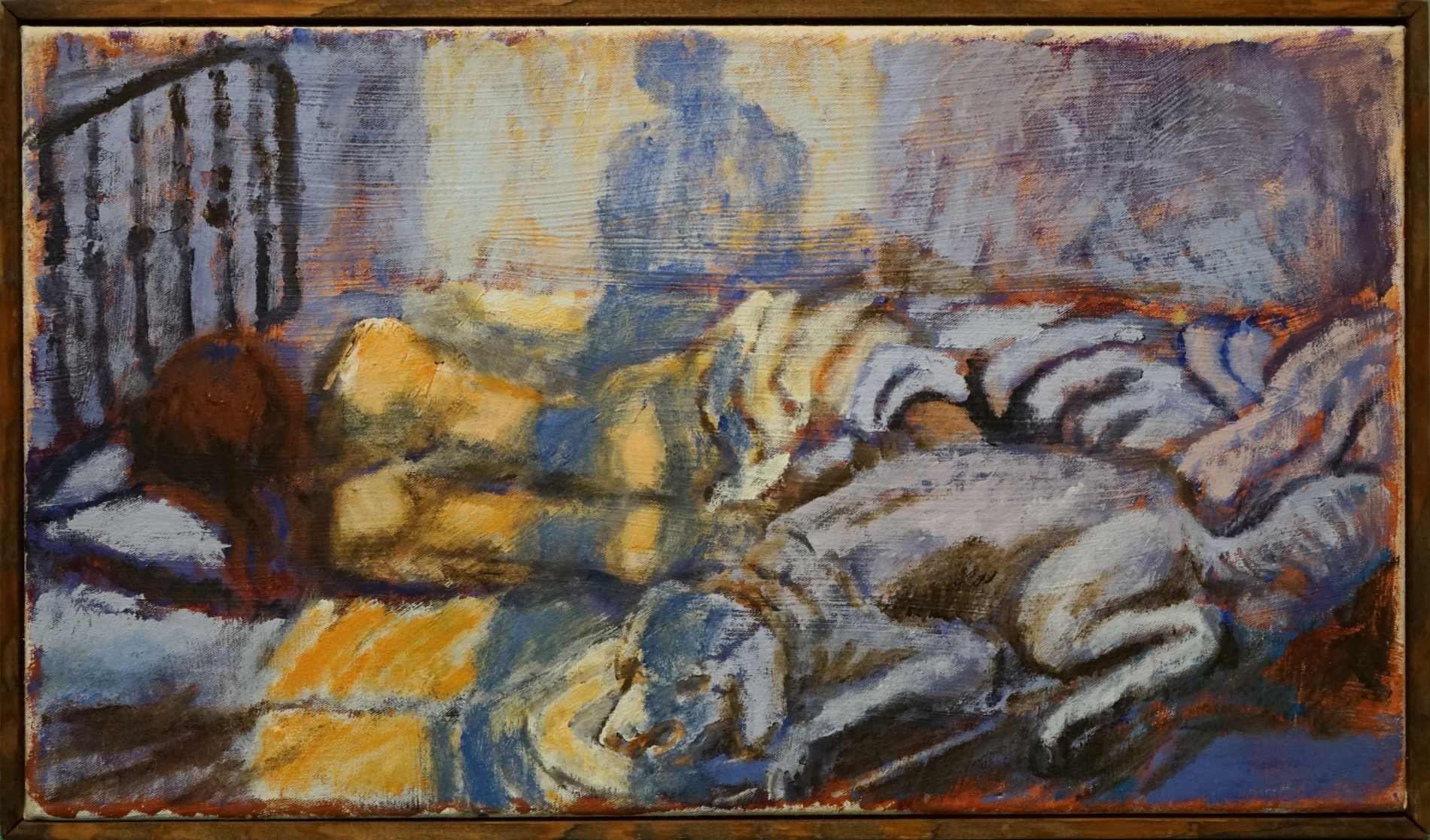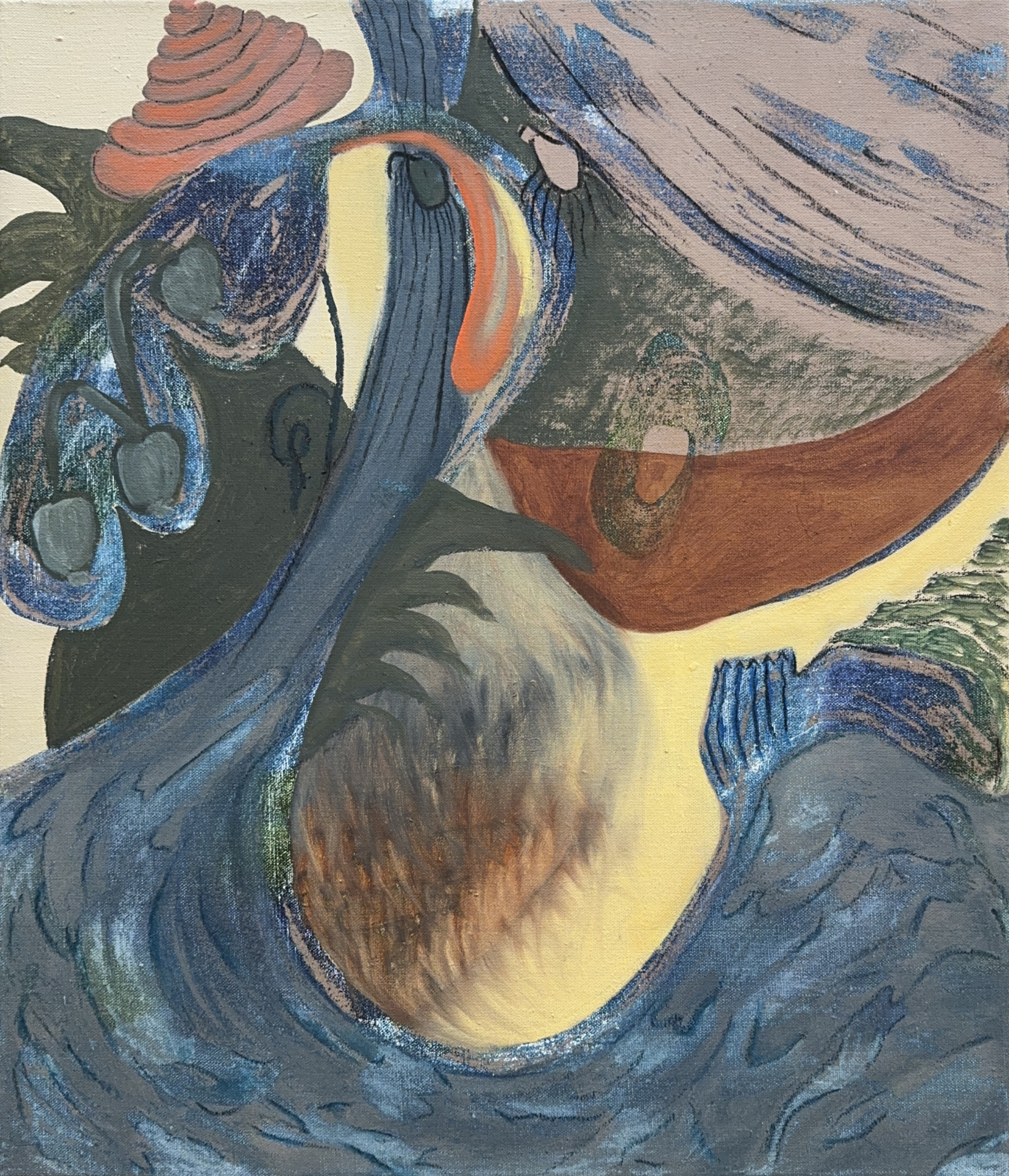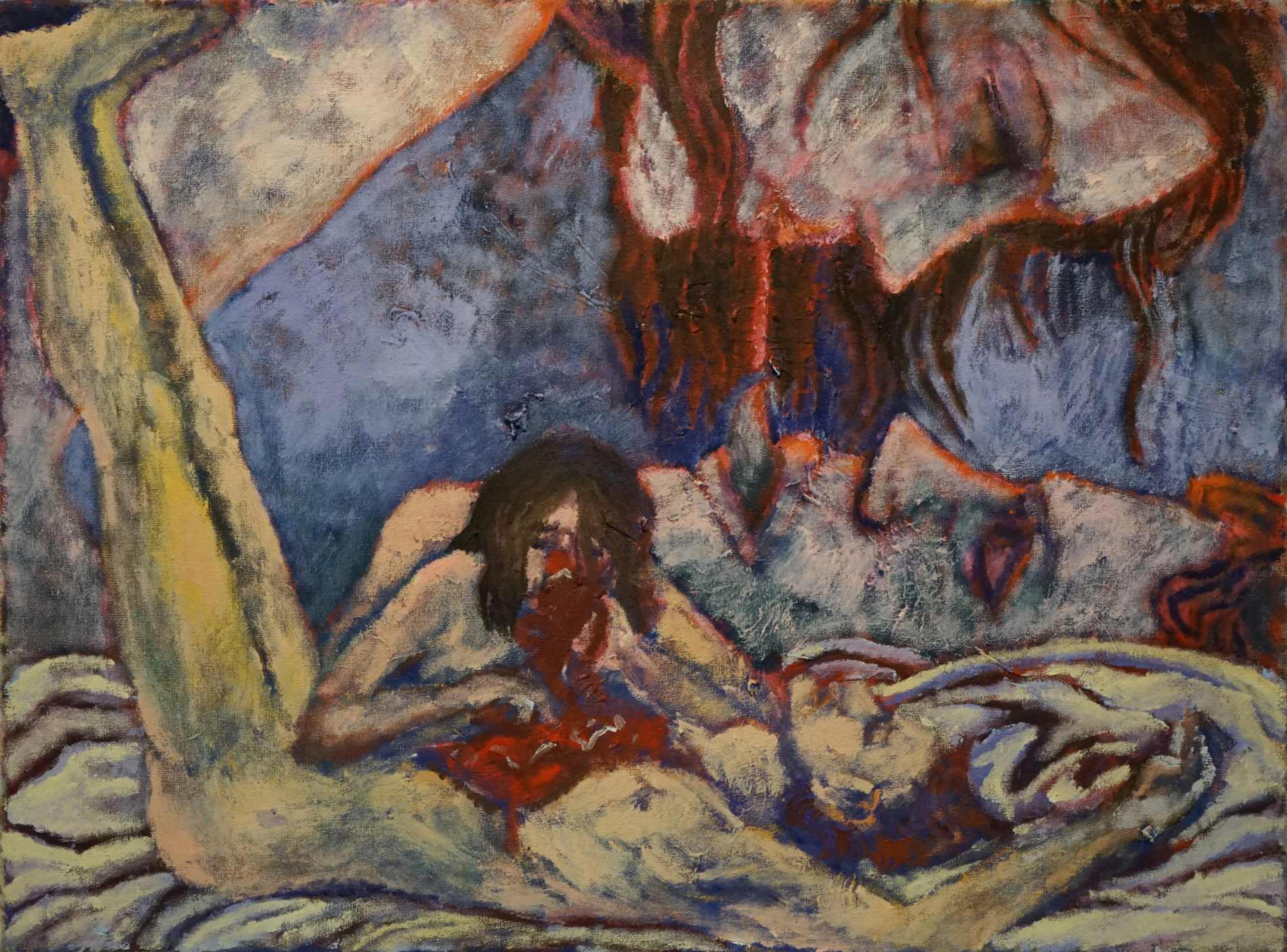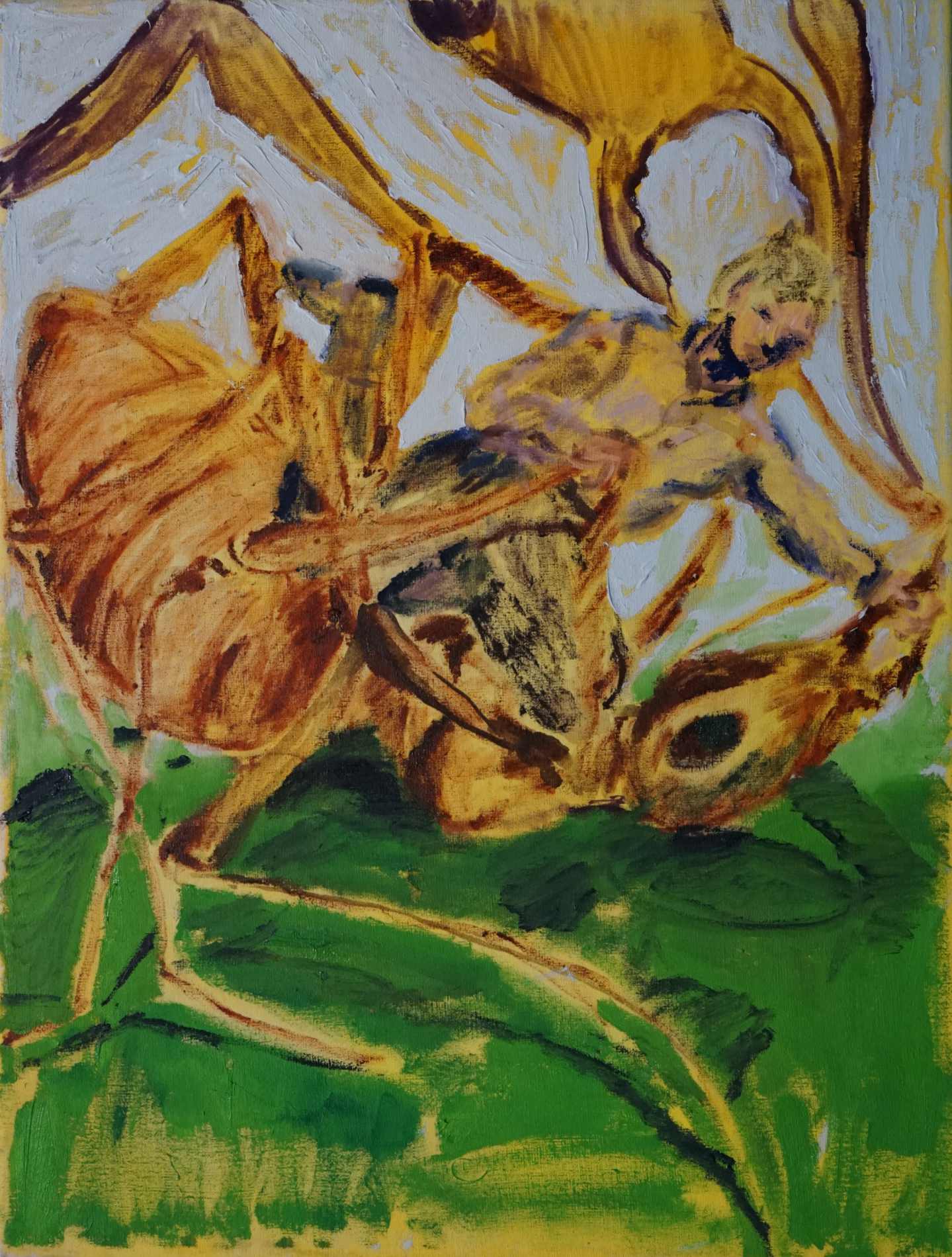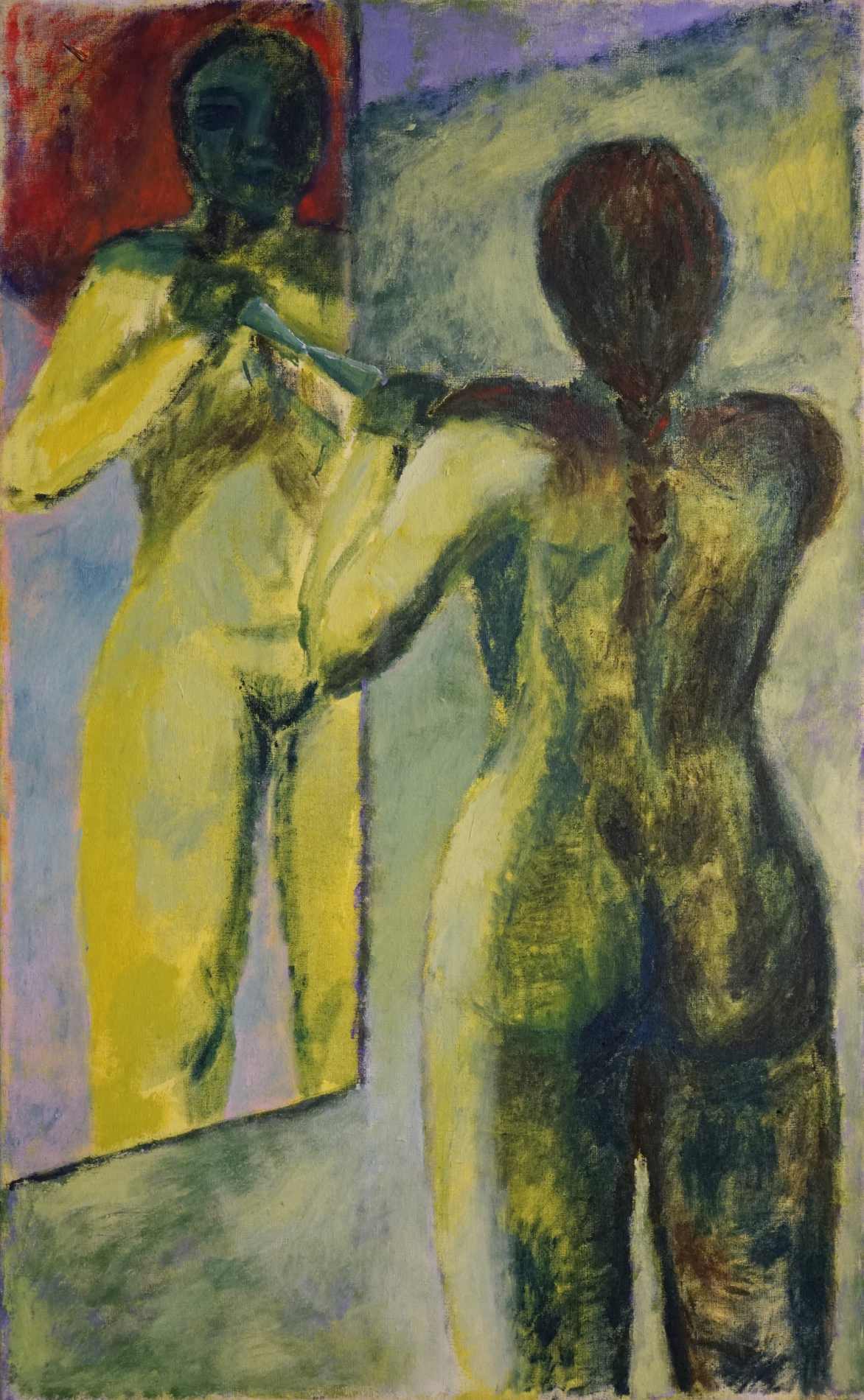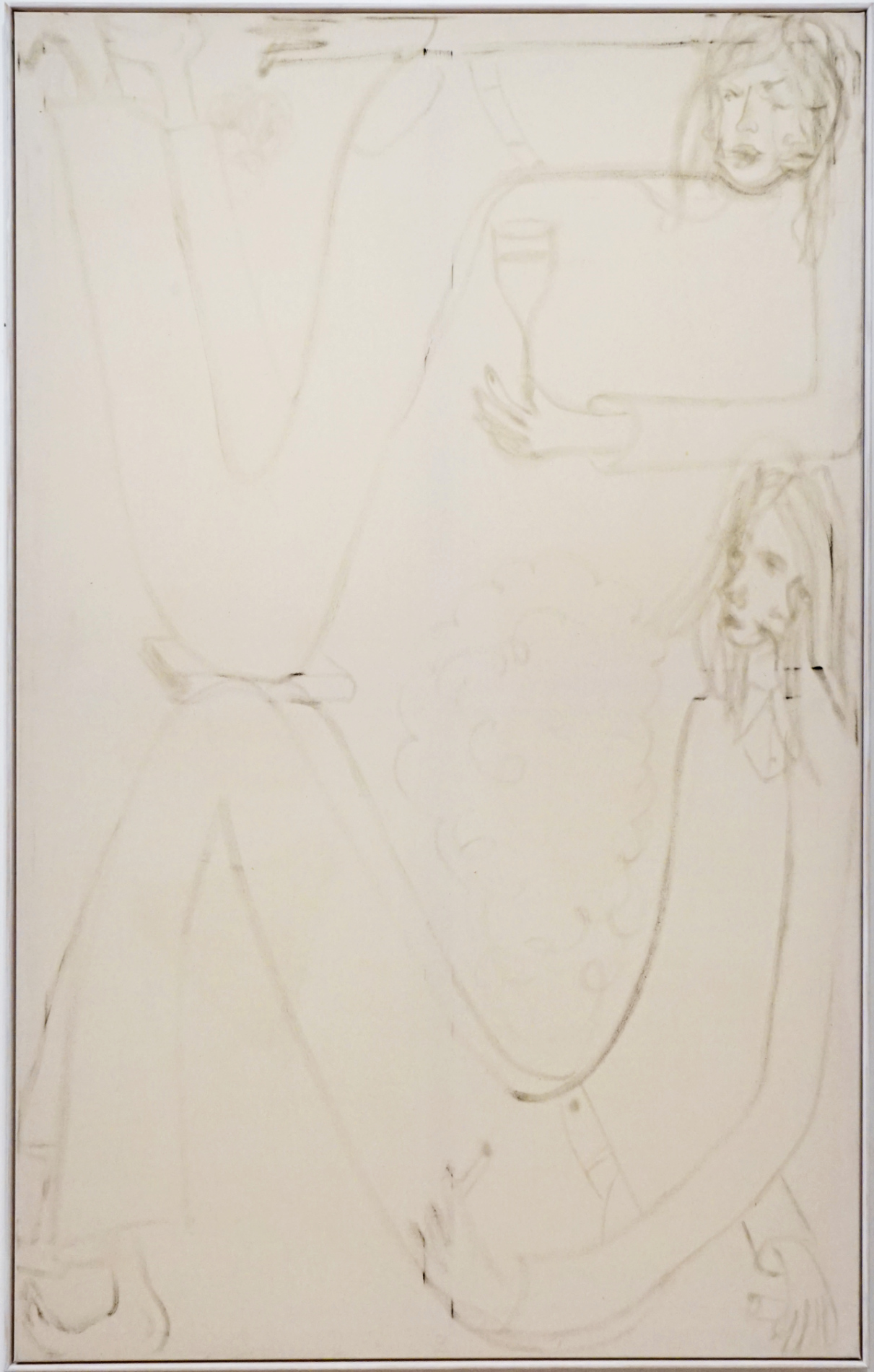Alfred Bow, Donya Aalipour, Adrian Buschmann, Ina Aloisia Ebenberger, Katarina Spielmann, Nazim Ü Yilmaz, Daniel Richter
“An emancipated community is a community of storytellers and translators. “J. Ranciere
Narratives tell us about ourselves and the world. In words and also in pictures. In painting, primarily through designed figures and constellations of figures and through the context given to them in painting. Painting brings life to canvas in a way that can be experienced by the senses, directly.
Contemporary narratives are full of immediate situational and contextual meaning, as we saw in great detail in Whitechapel’s exhibition “Radical Figures”, which also included works by Daniel Richter from various periods. They show the “concreteness of the concrete self in its immediate society”, as Arthur C. Danto describes it. This is the core of the narratives of the artists of our time.
Painters tell us what they see and how they see it, in the world in which they live. Their stories invite us to experience them, to reflect on them and to engage with them. About how we see ourselves, understand ourselves, feel ourselves, act within it, and also how we want to be seen, felt and understood. How we relate to others, and our environment. What intentions we pursue and what relationships we want to establish or avoid.
In our exhibition in Vienna, Daniel Richter and graduates of his class at the Academy of Arts address topics that are relevant to them. Their narratives are always personal, thematic and stylistic; they are not documentations of facts, not objective representations of reality. They are shaped by their own perceptions, impressions and experiences, values, desires, ambitions and fears. Of ideas, allegories or fantasies. Art history, which they approached boldly and impartially as painters, and the polyphony of the present expanded the artists’ repertoire. Themes can be based on concrete experiences and rooted in archetypes, myths, legends, literature, beliefs, influenced by history and the zeitgeist. All of this can flow into one another – in a creative way. Painting can do what photography or documentary film can never do and would never claim to do.
Are there still limits to the visual arts today? The answer seems to be: There are no limits. And if they are demanded, then it is more in the case of narrative/figurative painting, albeit more on the basis of sociological or ethical theories than aesthetic ones. Narrative painting thrives on constantly new perspectives and the constant crossing of boundaries, on the constant sketches of scenarios charged with emotion and thus on offers to recognize new things, to recognize anew. It can take images as a found template and transform them into something else through painting; it can incorporate abstract, iconographic, surrealistic elements. It can be provocative, brutal, sensual, erotic, comical, absurd, symbolic, cynical. In its confrontation with the world, it develops its visual multilingualism and helps us to experience and understand our existence more profoundly.
After starting his career with abstract paintings, Daniel Richter, as he said in an interview, turned to figurative painting to relate to social reality and brought elements of abstract painting into these figurative paintings. Compared to these figurative paintings, where the narrative is central, in his recent work he has once again broken the balance between abstract and figurative painting and embarked on a new exploration with more abstraction. However, his painting continues to deal with themes that are important and poignant in many cultures.
Like Richter, his formal students also initiate a global discourse on fundamental existential questions: How does individuality develop, how fluid and diverse are identities? How do humans relate to nature? How is domination established? With what benefits and with what collateral damage? Is peaceful coexistence possible? How inclusive do we want to be as a society? What is desirable, what is true, good and beautiful? Daniel Richter’s efforts to strike a balance between abstract and figurative painting, his use of color and his exploration of these social and political questions are also evident in the works of the younger generation of painters he has trained, such as Alfred Bow, Adrian Buschmann, Donya Aalipour, Ina Aloisia Ebenberger, Katarina Spielmann, Nazim Ü Yilmaz.
